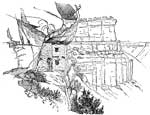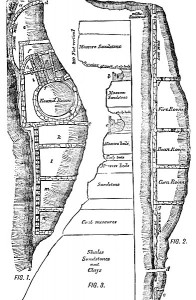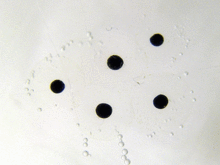When you study animals in the home, you learn about many things. Not only do you learn about the structure of animals, their habits, and their usefulness to Man, but you learn about the responsibility of having to care for a pet. You learn about illnesses, safety, dependency and friendship. These are the reasons why so many of us have pets in our homes.
The idea of using your pet as a science topic has probably occurred to many homeschoolers, and so, here are some ideas which may help you “pull it all together” for homeschool.
Because there are so many individual things to learn about animals, zoologists have generalized. Generalization involves using the similarities of organisms to study them together in groups. In this way we might ignore the differences between animals and merely note that they all move in some way.
Animals have motion systems. Some use muscles, others use hydraulic systems, but they all have a generalized motion system. How are the motion systems different? How are they alike? There is a whole branch of zoology called comparative anatomy specializing in making these kind of comparisons.
One thing all living organisms have is a life cycle. We usually study life cycles when we study insects, especially the butterfly, and we all remember learning about caterpillars, pupae, and cocoons.
An excellent way to study life forms is to investigate their life cycles. Most of them are easier than insects to observe, it just takes longer. In the study of life cycles, a generalized cycle can be applied to most animals.
There are three basic processes of life in this cycle: Intake, growth, reproduction. These are all processes instead of stages, but they define what is taking place within the life cycles of any particular organism.
Intake is the taking in of nutrients necessary for growth and reproduction.
Growth is the use of the nutrients to increase in size and maturity.
Reproduction is the continuation of the species, which can only occur after a certain level of growth and maturity has taken place.
Failure of the organism to do any of these steps will result in death. In the cases of intake and growth, death is of the individual while failure to reproduce results in death of the species.
Some species have several remarkably different stages to go through while growing before the species is mature enough to reproduce. An example of this is the butterfly. Others species, such as dogs, grow into adults from puppyhood, a stage in which the young animal already resembles the adult.
All life forms go through these processes of intake, growth, and reproduction during their life cycle. In fact, they must go through these stages to preserve the species.
Let’s discuss how you can use your household pet to study life cycles, processes, and life changes. I have used a dog as an example here, but any pet can be studied in the same way.
Intake: A puppy needs nutrients to live and to grow. The required nutrients are food, water, and air. Each of these nutrients is needed for the chemical processes going on inside your pet. Actually, these are almost the same processes going on inside of you, too. Studying them with your pet should make your student more interested in those processes occurring in humans.
The first food for the puppy is, of course, mother’s milk, a food custom-designed by God for that species. Other mammals provide milk, too, but all milks are not alike. Some provide significantly more fat that others. The whale produces milk with the highest percentage of fat of any mammal, a fact which is useful to the baby whale while growing the fatty layer needed to survive in the cold oceans.
By the way, the first characteristic distinguishing mammals from other life forms is the production of milk for the young. Young animals of other phyla get their nutrients from other sources. Reptiles usually do not care for their young, and so the young reptile will get nutrients from sources similar to those of the adult of the species. All of these topics are great ones to research during your science time periods.
Occasionally, a puppy has not been weaned before being separated from its mother. Perhaps the mother dog was killed and the puppy was not mature enough to be separated. Whatever the reason, a milk replacer is necessary. In the local pet store, you will find milk replacers for different species of pet mammal.
As an activity, you can visit the pet store and compare the different amounts of nutrients in each. Build a chart showing the similarities and differences.
A prepared puppy food is designed to provide all of the nutrients that puppy needs for growth to maturity. Another good activity for your students is to check out the packages of puppy food in the grocery store. Your student should compare the amounts of everything in the grocery store puppy foods with those special puppy preparations found in the veterinarian’s office. You might also discover why they are more expensive. A comparison between adult dog foods and puppy foods is an excellent way to determine the special amounts of nutrients needed for growth.
Different mammals have radically different digestive systems.
An excellent study would be to compare the digestive systems of dogs, cats, horses, and cows. This would include two herbivores and two carnivores.
Another way of looking at this small group of animals is by observing that their digestive systems are designed to get nutrients out of the food they eat. An animal which eats grass must have the ability to get through the cellulose layer of the leaf cell walls, so it can get to the nutrients.
How does a cow do this? How does the horse? Hint: The horse, like the rabbit and guinea pig, gets help from bacteria living in the caecum and/or colon.
Why does a cat, a carnivore, eat some types of grass? Hint: The word “compare” means to note both similarities and differences.
Your puppy will take in air from which his little lungs will extract oxygen. Many animals do not use lungs for this function. Earthworms, for example, absorb oxygen straight through the outer layer, the skin. Fish use gills to extract oxygen from the water they swim in. By the way, this oxygen the fish breathe is from the oxygen which is dissolved in the water, not from the oxygen which is combined with the hydrogen to make the water molecules. You may have your student investigate gas exchange. This is the process of taking in oxygen and releasing carbon dioxide. Needless to say, all oxygen breathers do this, using different methods.
A puppy getting milk is also getting a good supply of water, another nutrient. As the puppy matures and is weaned, he will consume more water from his water bowl.
Water is a vital nutrient for your pet. All of the cells in the body depend upon a certain amount of water to maintain their functions.
A puppy needs an almost constant supply of water during the day. Of course, the puppy will also urinate more frequently than an adult dog necessitating vigilance on the part of the young puppy owner!
Growth: This is the process whereby an organism increases in maturity, strength, and usually size. During this process the young animal reaches his full adult size and also reproductive maturity.
The young of many species are built in a different proportion than is the adult of that species. Puppies have larger eyes, heads, feet, and tails in proportion to those of an adult dog. Then, later, the rest of the body catches up with these parts.
Artists, when drawing young animals, remember these proportions. A good activity is to collect pictures of young animals and older ones of the same type and compare their relative sizes of the parts of the body. You can do the same with a camera, recording your own pet’s growth.
Another activity is to keep a record of your pet’s height and weight. A line chart can be created using the data. This growth chart can be part of your student’s science lab notebook.
Reproduction: Nothing teaches the reproductive process like observing it happen. The birth of puppies is very exciting. Of course, the proper precautions must be taken because mother dogs can be extremely protective of their litters.
What are some of the things you can study about on the topic of reproduction?
Breeding and the different breeds of dogs is one topic. Dogs are a great example of diversity with the many sizes and colors, and other characteristics. It is hard to imagine that all of our modern dogs came from the same base stock of wild dog which probably looked very much like a mutt. The reason for this is that the combinations of genes in a mutt are fairly well randomized again. It makes the mutt sort of like turning back the selective breeding clock.
Another topic you can study is genetics. Learning to do Punnet Squares is a good activity which even young children can do once they get some practice.
Having a pet can give you more than a year’s worth of biology to read about, talk over, and do. Use the generalized life cycle to guide your research. Watch the blog this week for internet and print resources. Practice generalizing in your home school classes. In this way, you can combine owning a pet, teaching critical thinking, and studying biology.
Information to collect/record on your pet
Name of the animal:
Date of birth:
Date acquired:
Breed:
Phyla name:
Kind of animal:
Herbivore / carnivore / omnivore:
Brand / type of food:
Vet check date:
Immunizations and date:

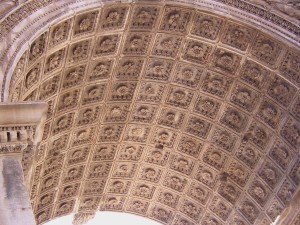
 do this would tell your child that his or her ideas are no good, and that building is boring. Just let your child play with the blocks.
do this would tell your child that his or her ideas are no good, and that building is boring. Just let your child play with the blocks.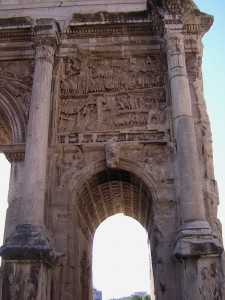 The building materials of the Romans were brick, concrete, stone, and wood. [amazon_link id=”0399300015″ target=”_blank” ]Talbot Hamlin[/amazon_link] describes Roman bricks as 1 or 2 feet square and one to one and one half inch thick, almost a large tile. These must have been fired bricks.
The building materials of the Romans were brick, concrete, stone, and wood. [amazon_link id=”0399300015″ target=”_blank” ]Talbot Hamlin[/amazon_link] describes Roman bricks as 1 or 2 feet square and one to one and one half inch thick, almost a large tile. These must have been fired bricks.
